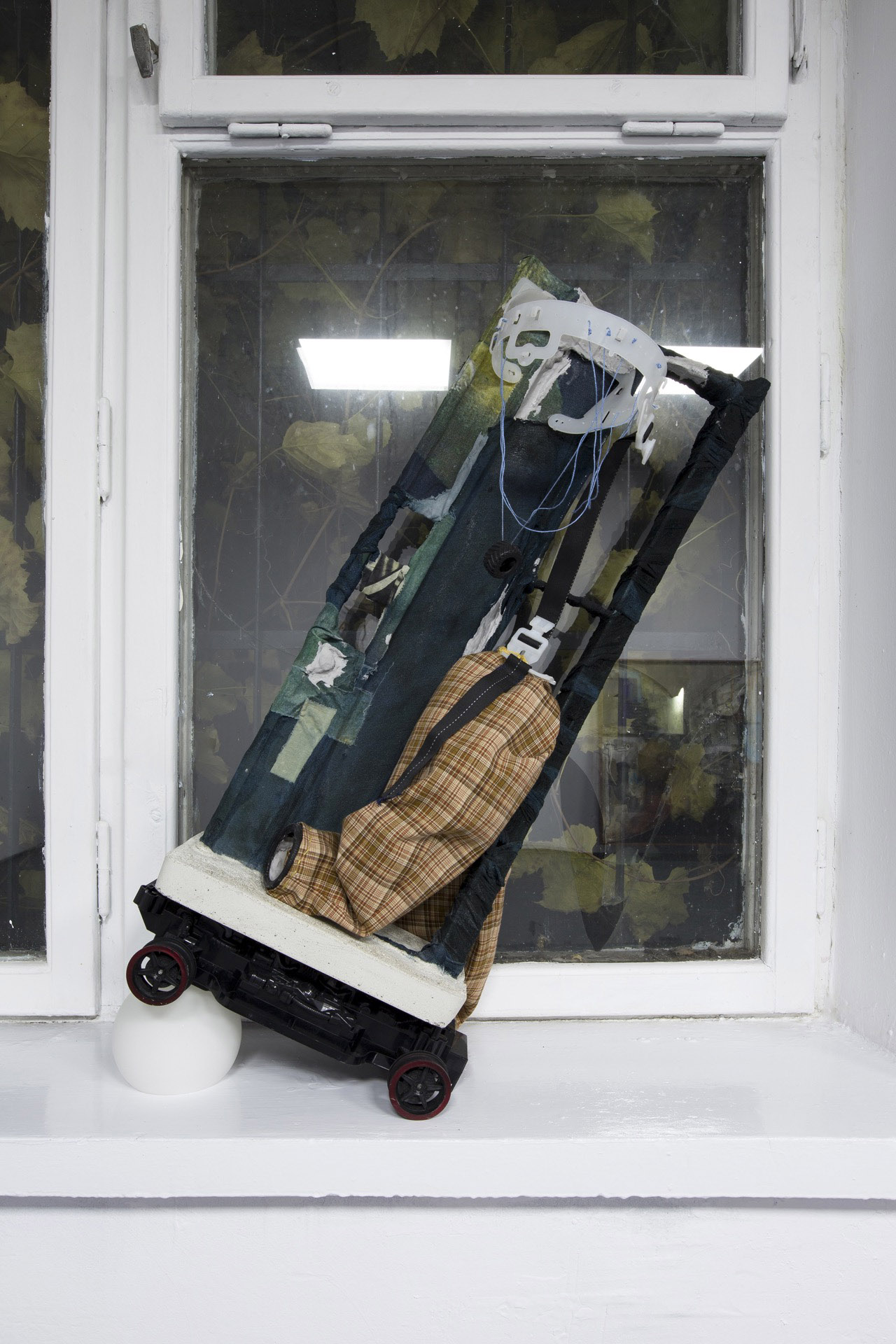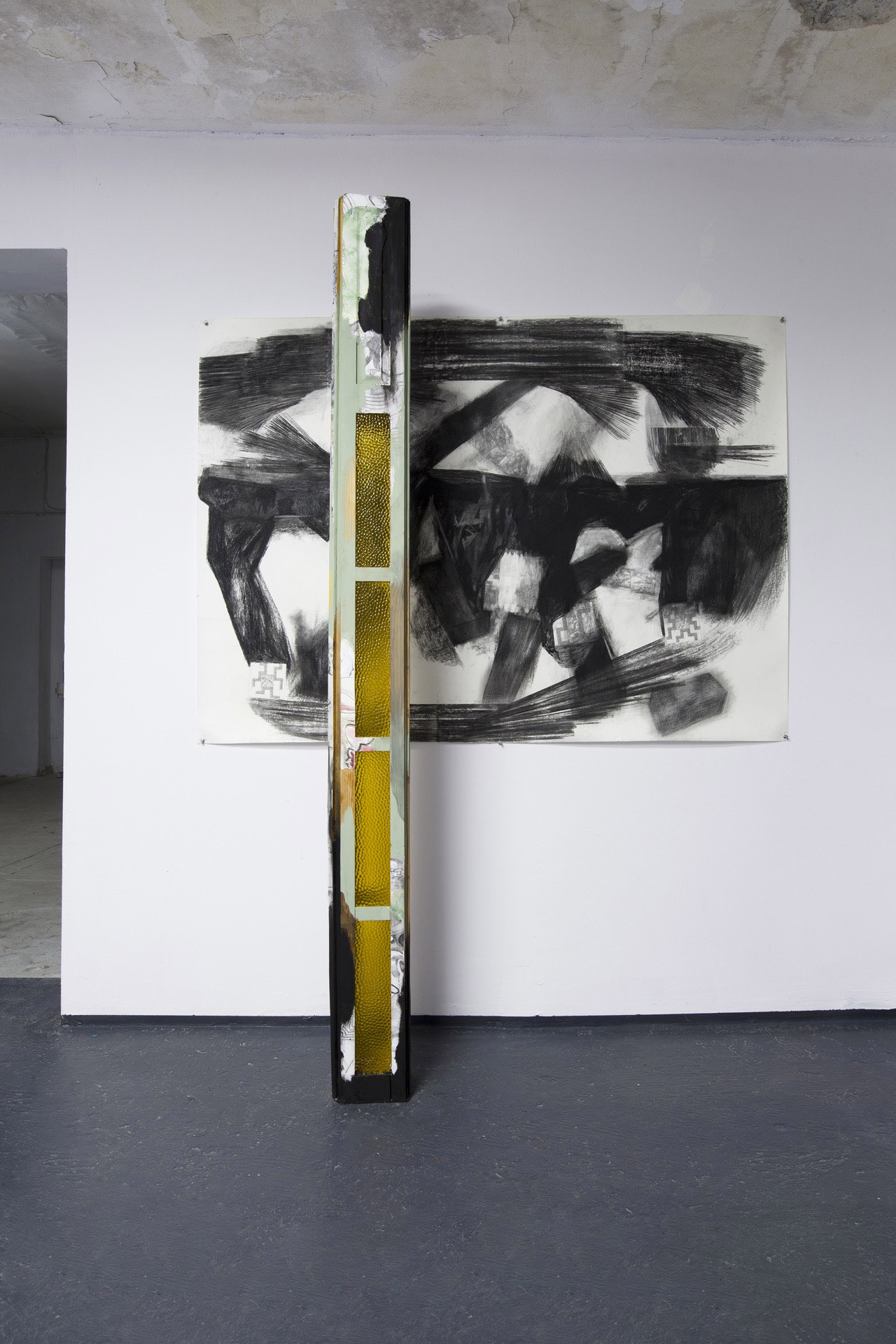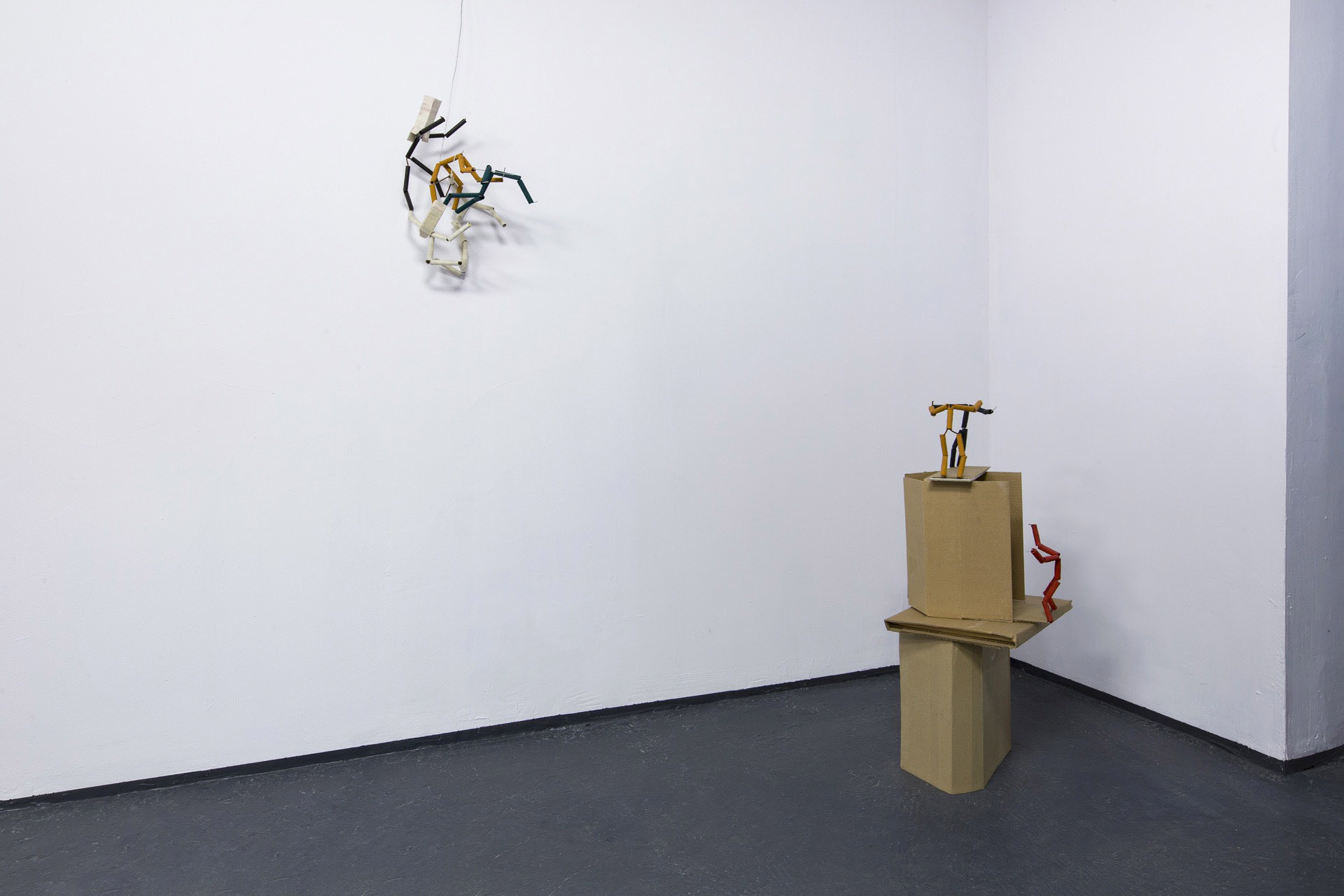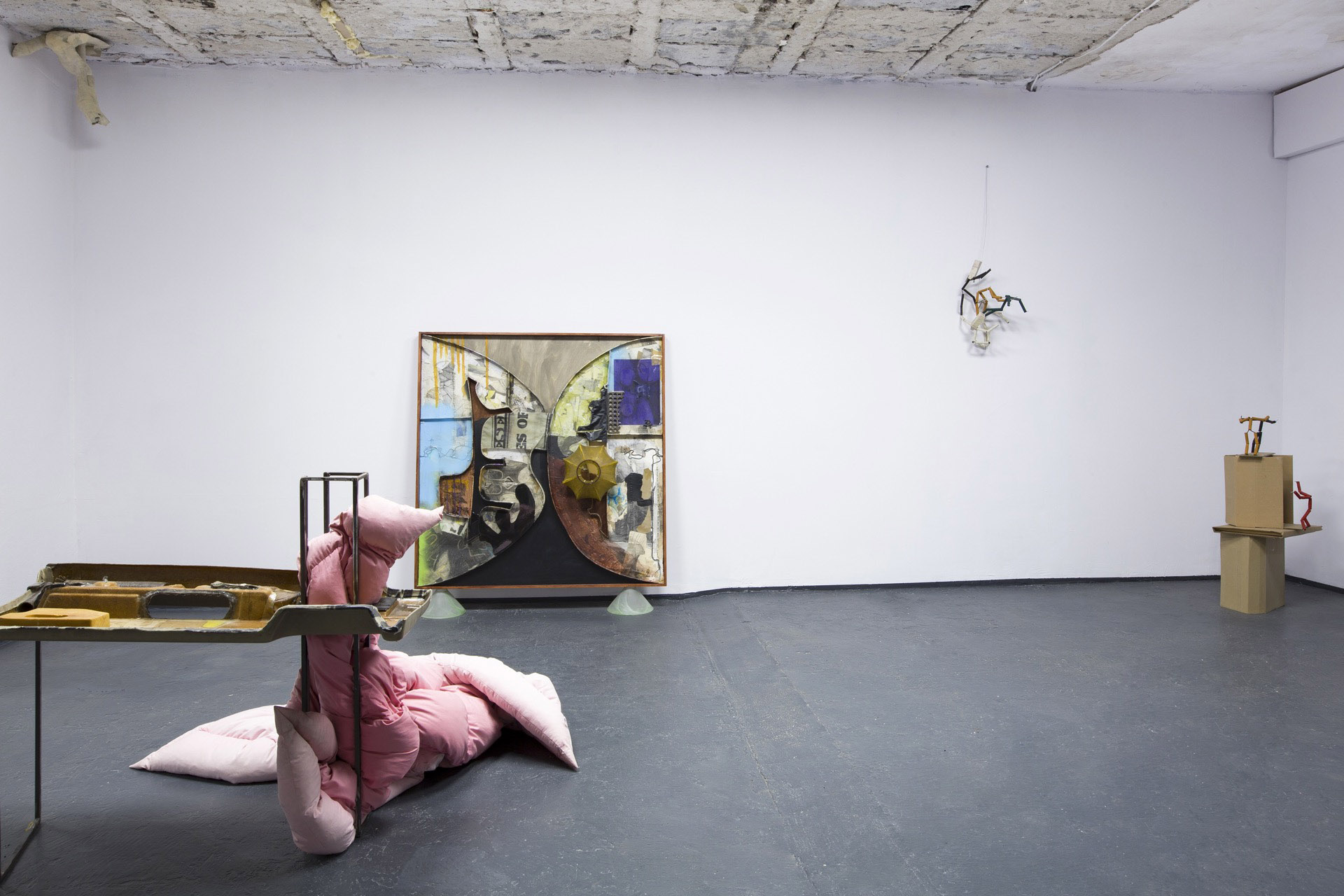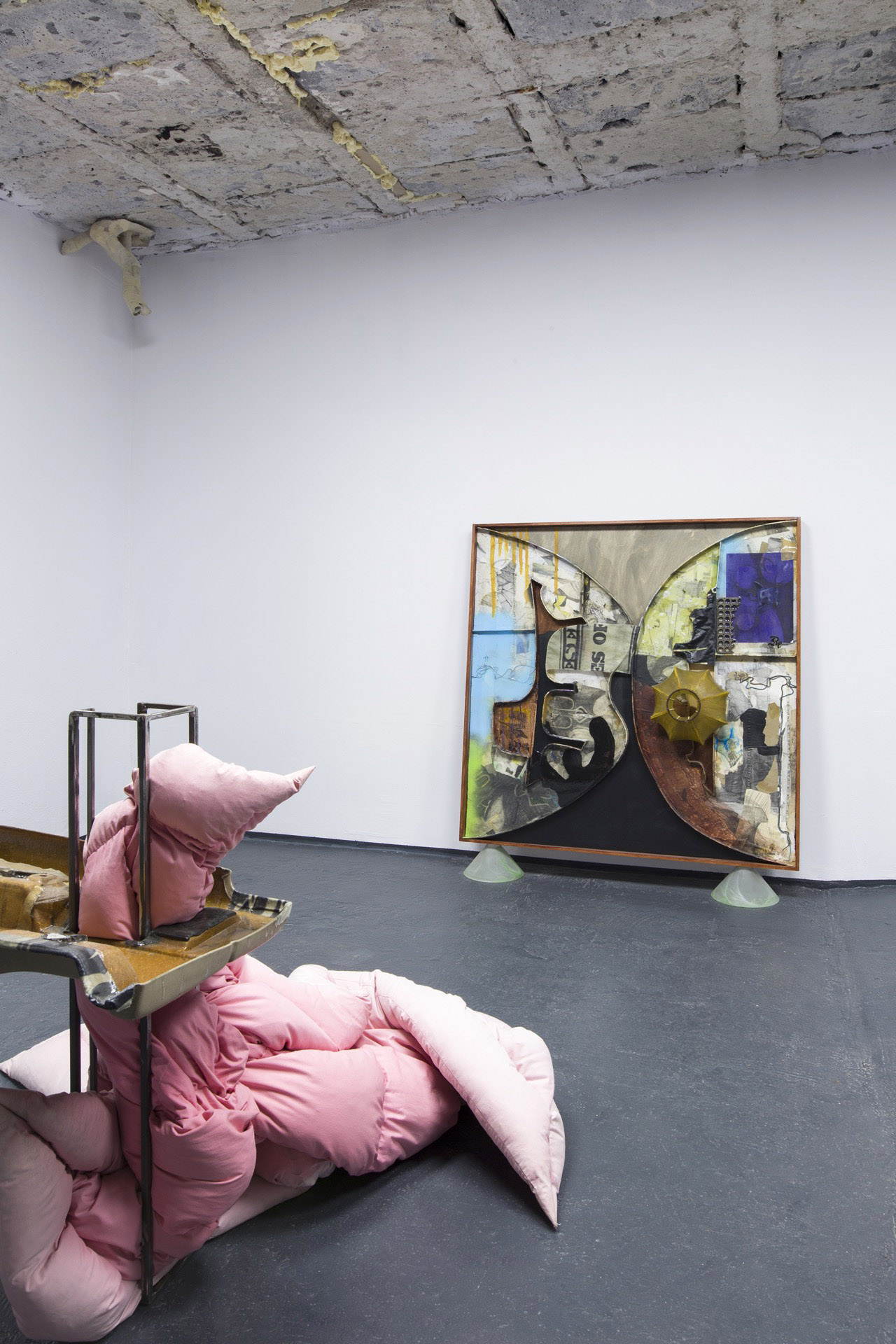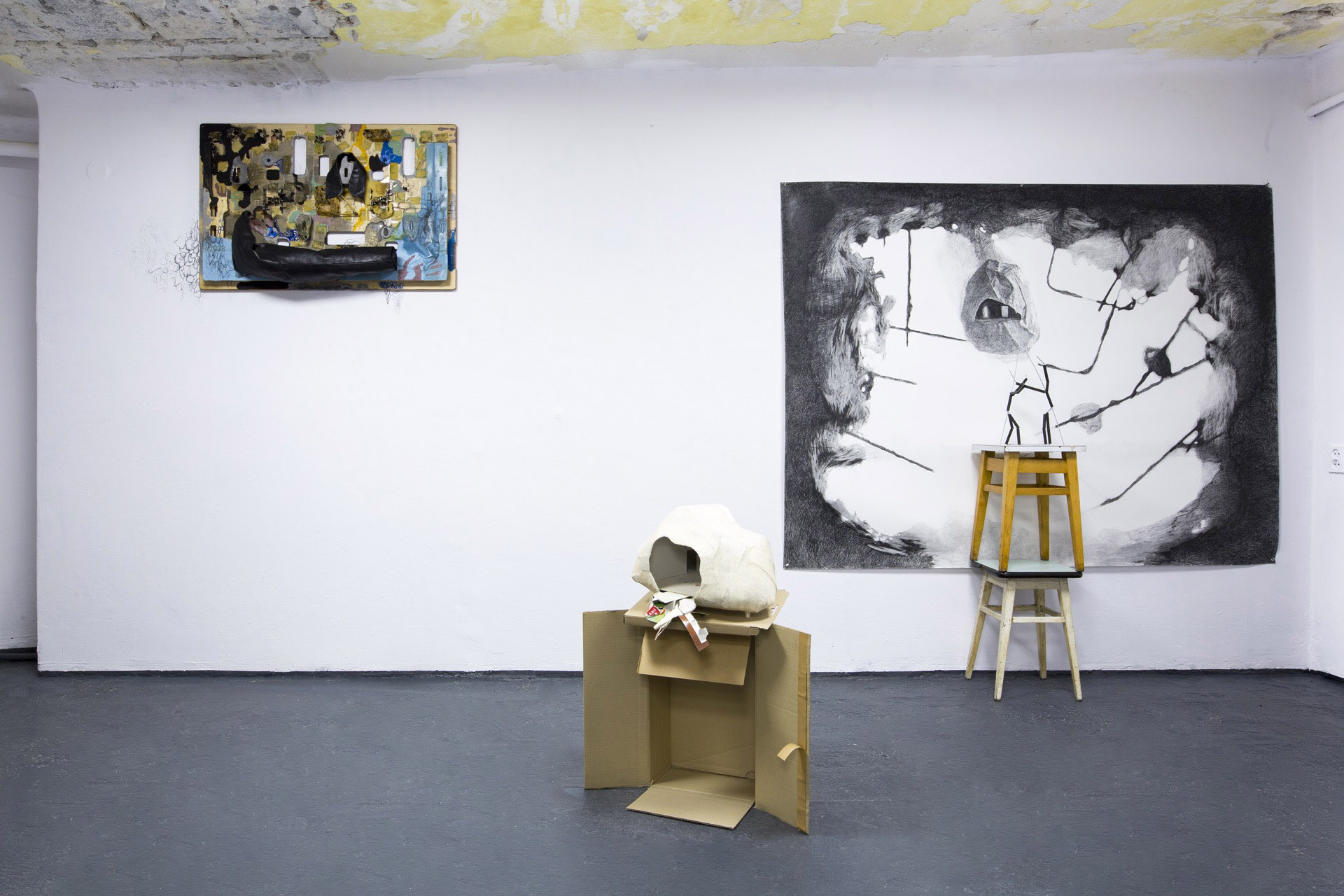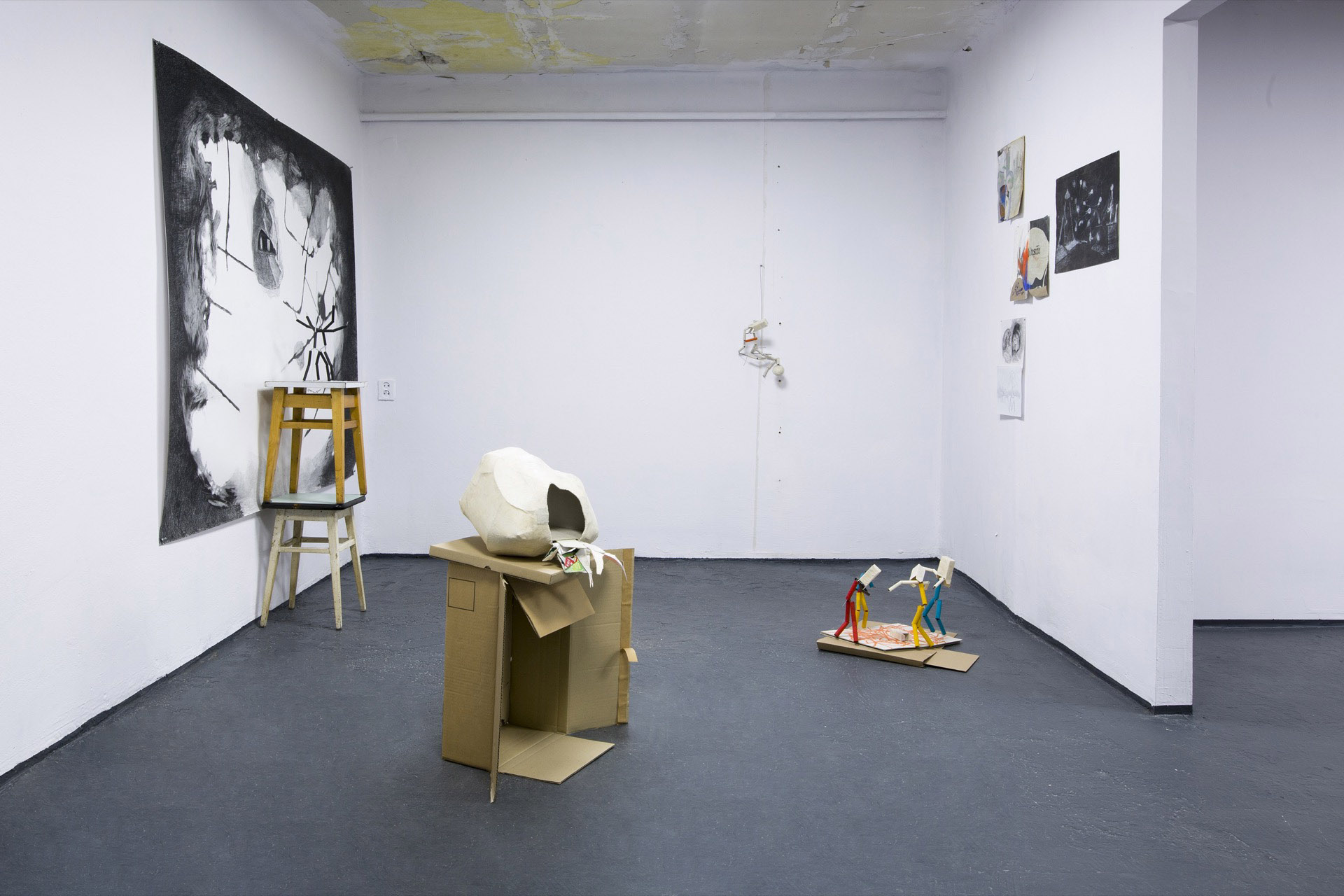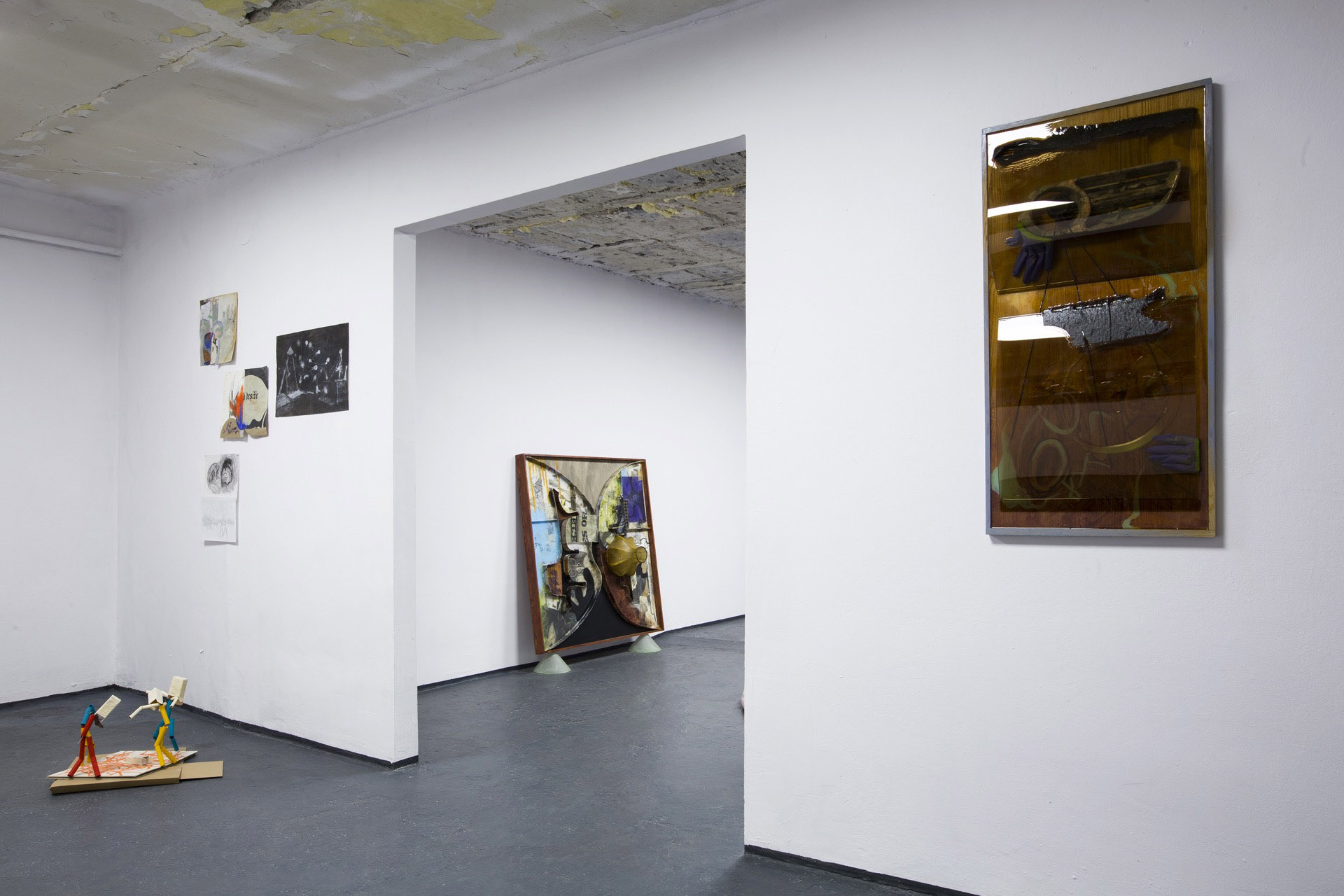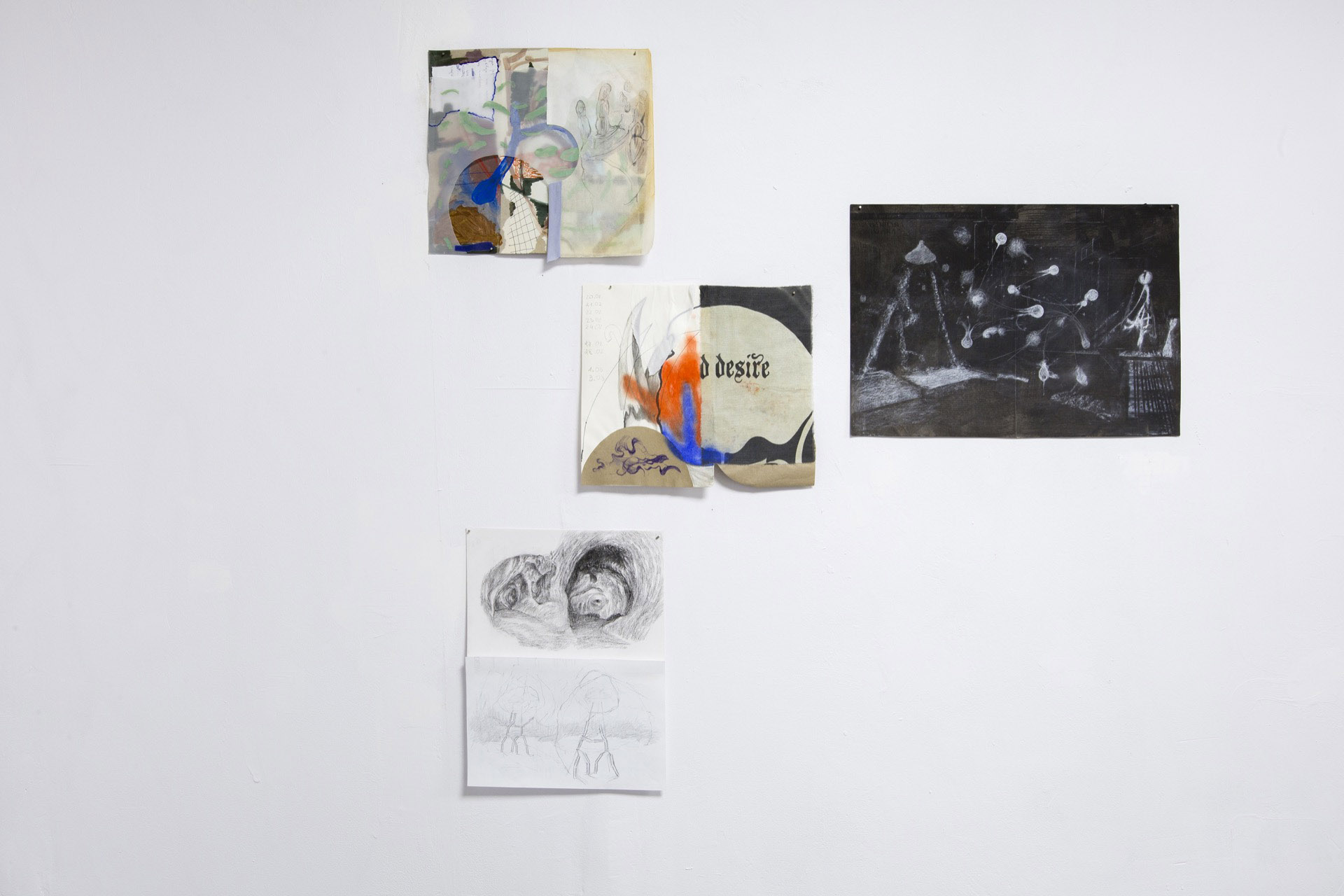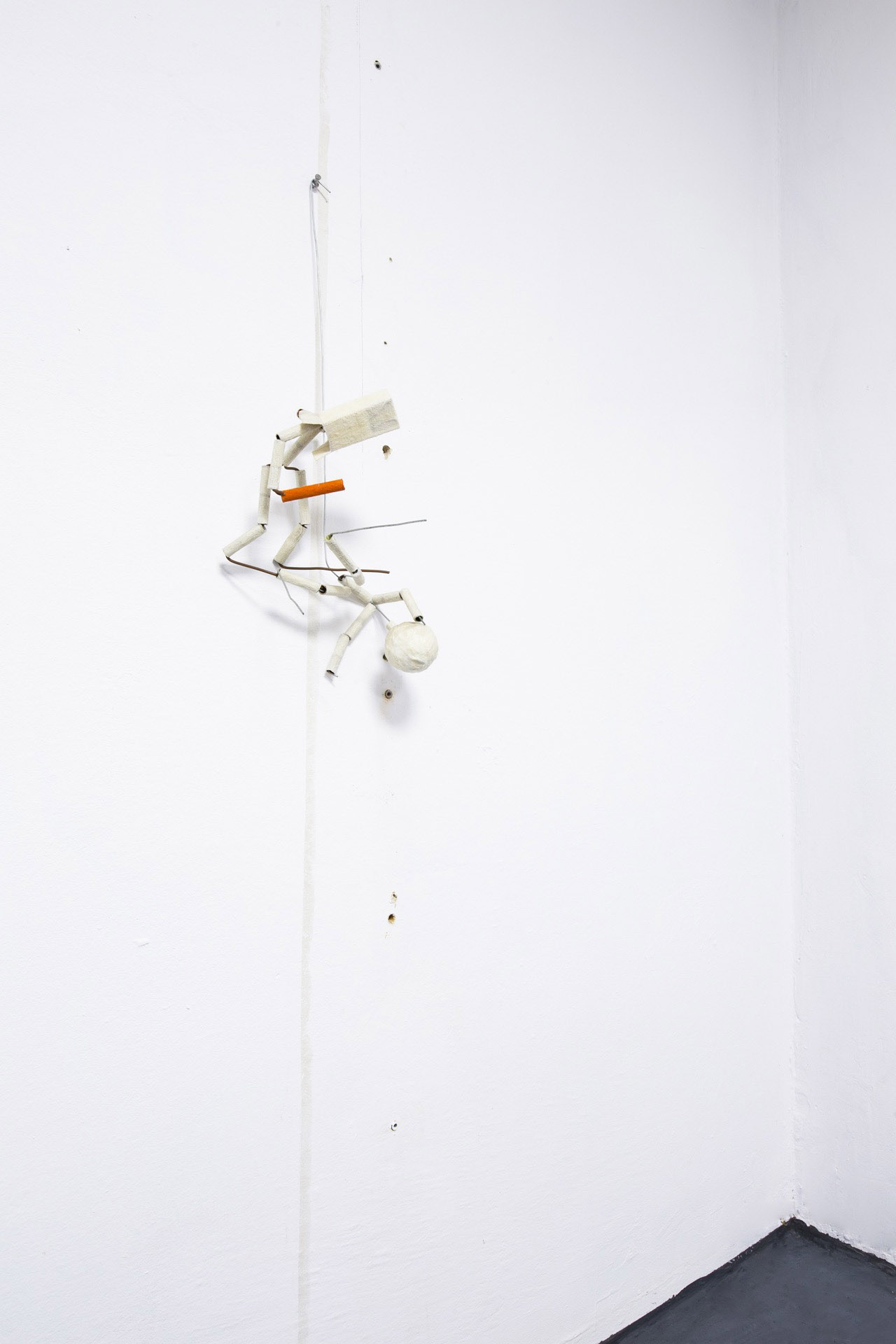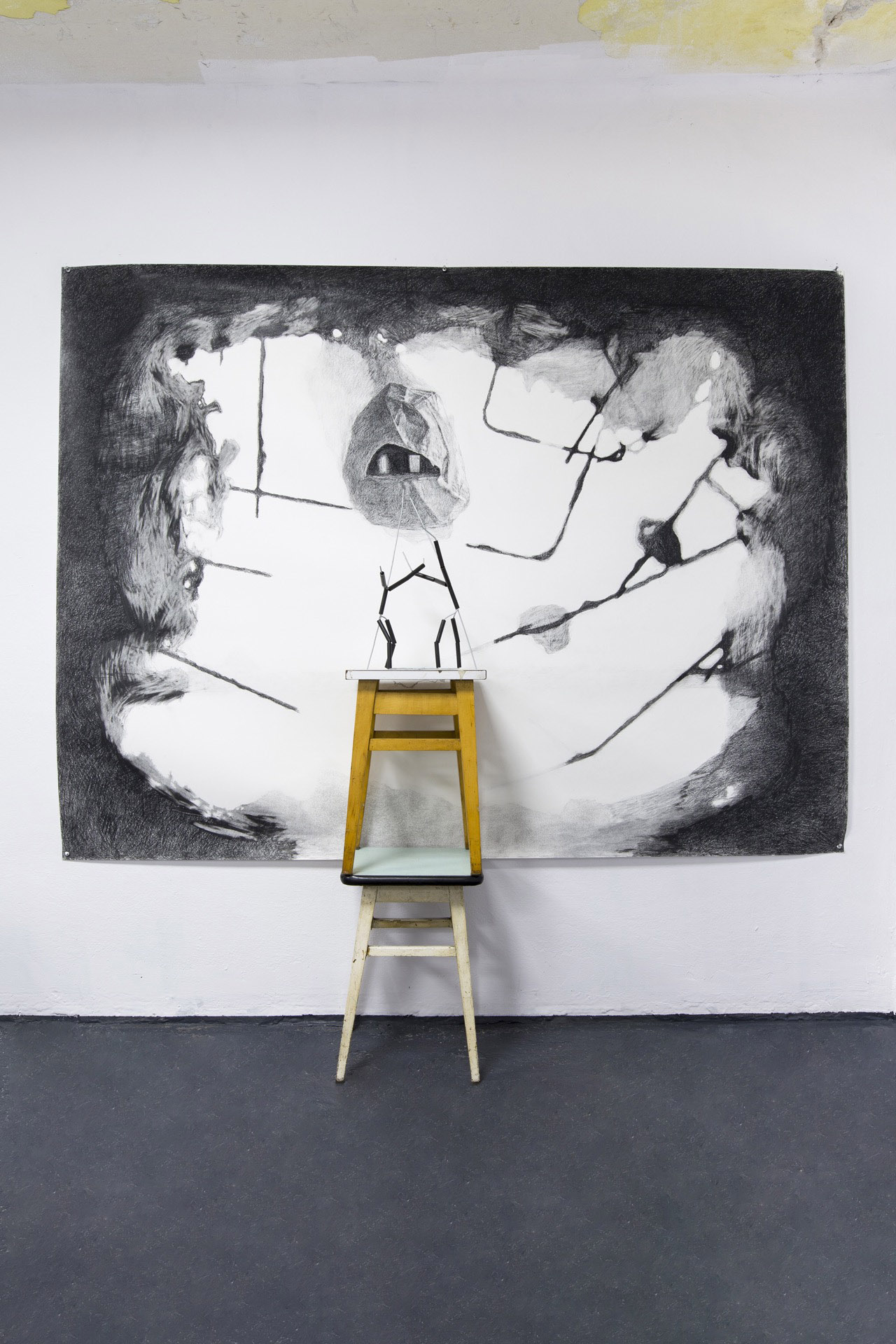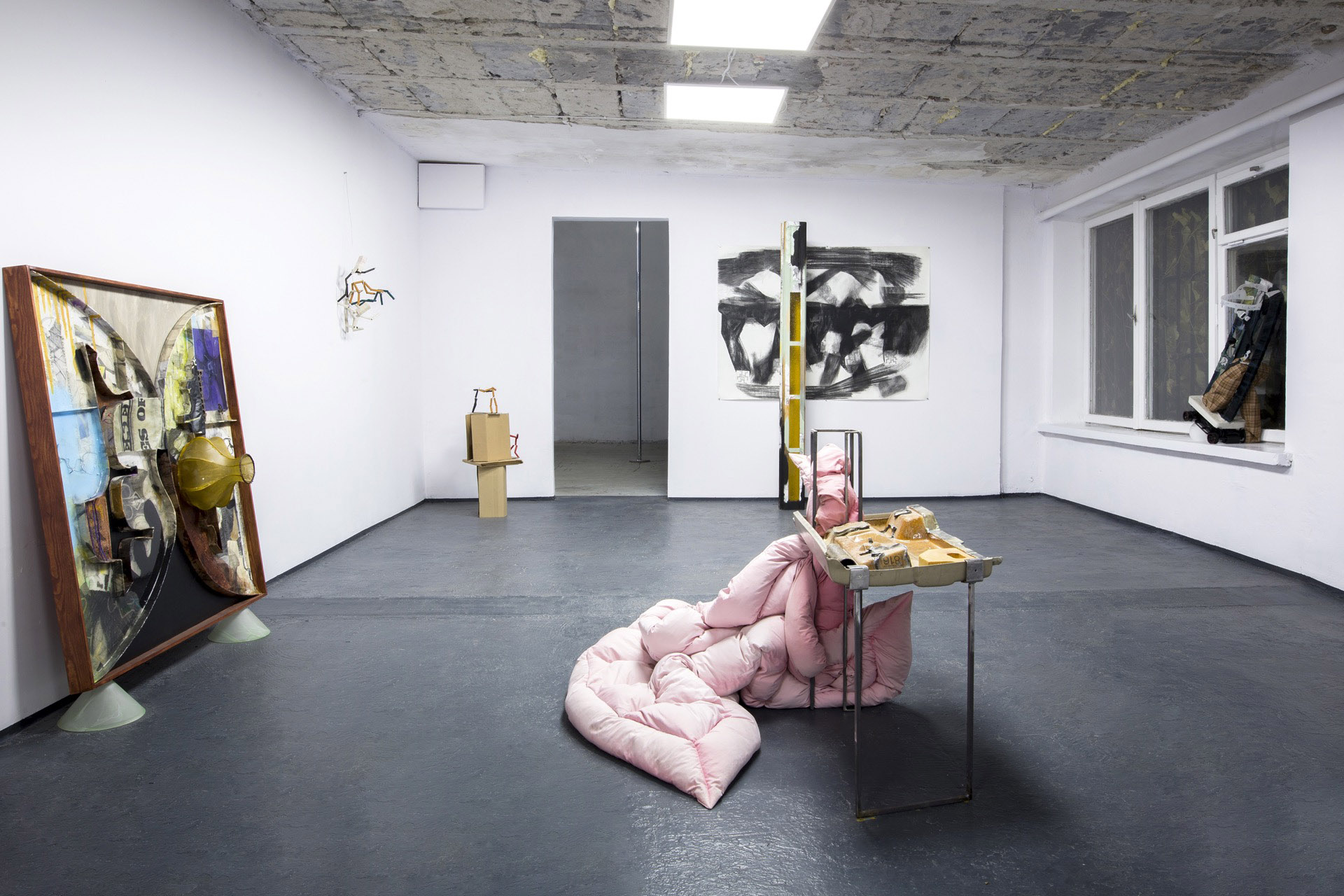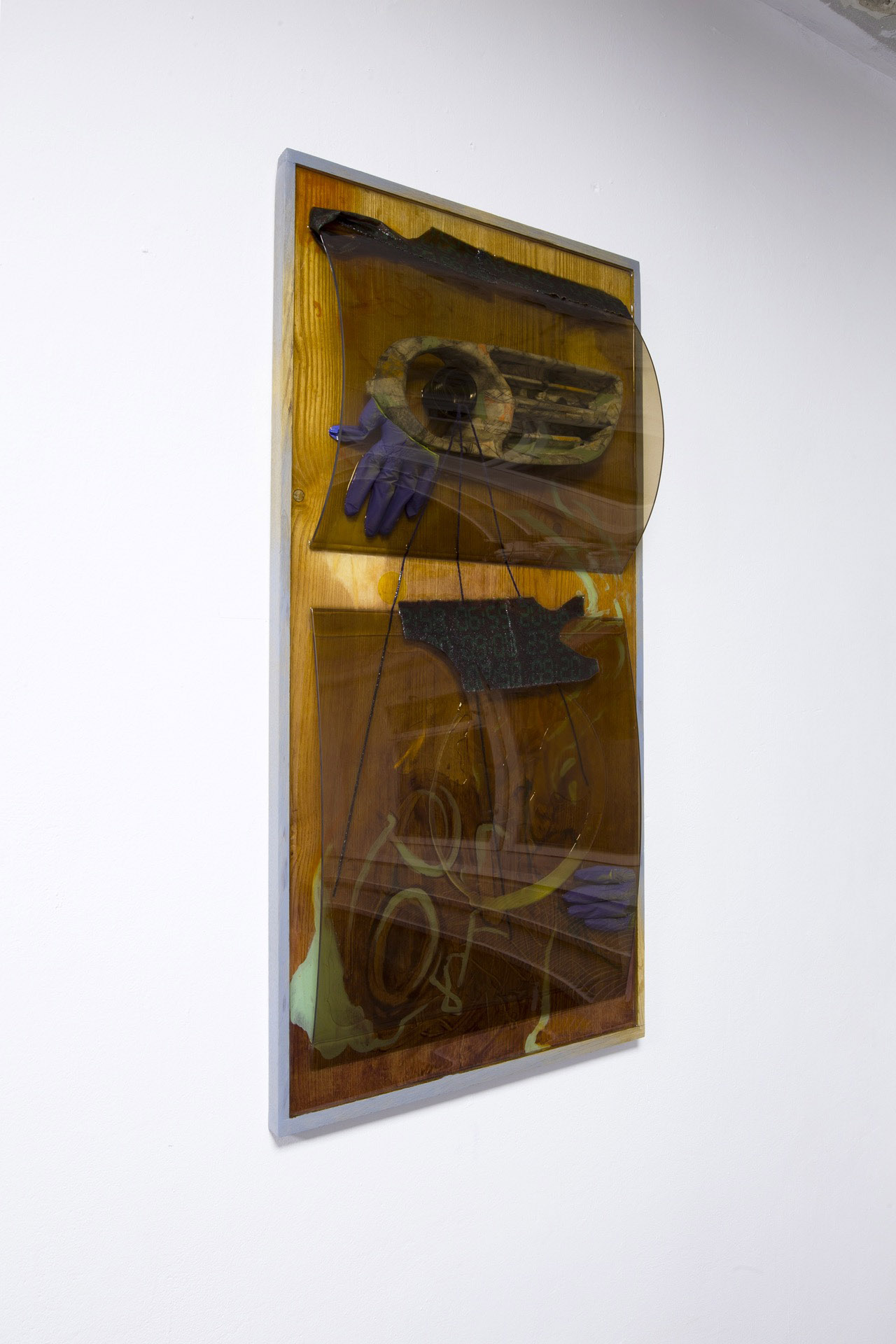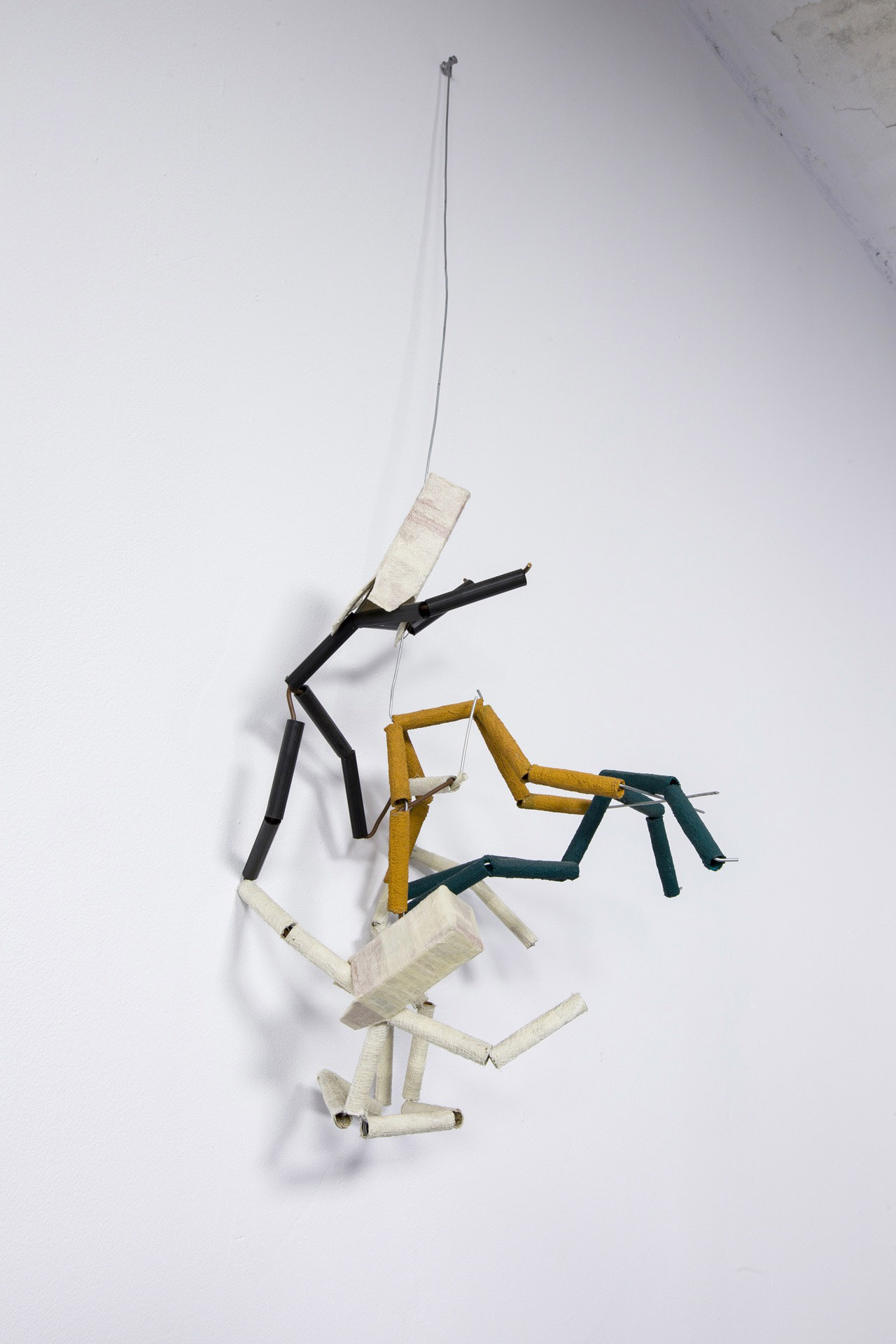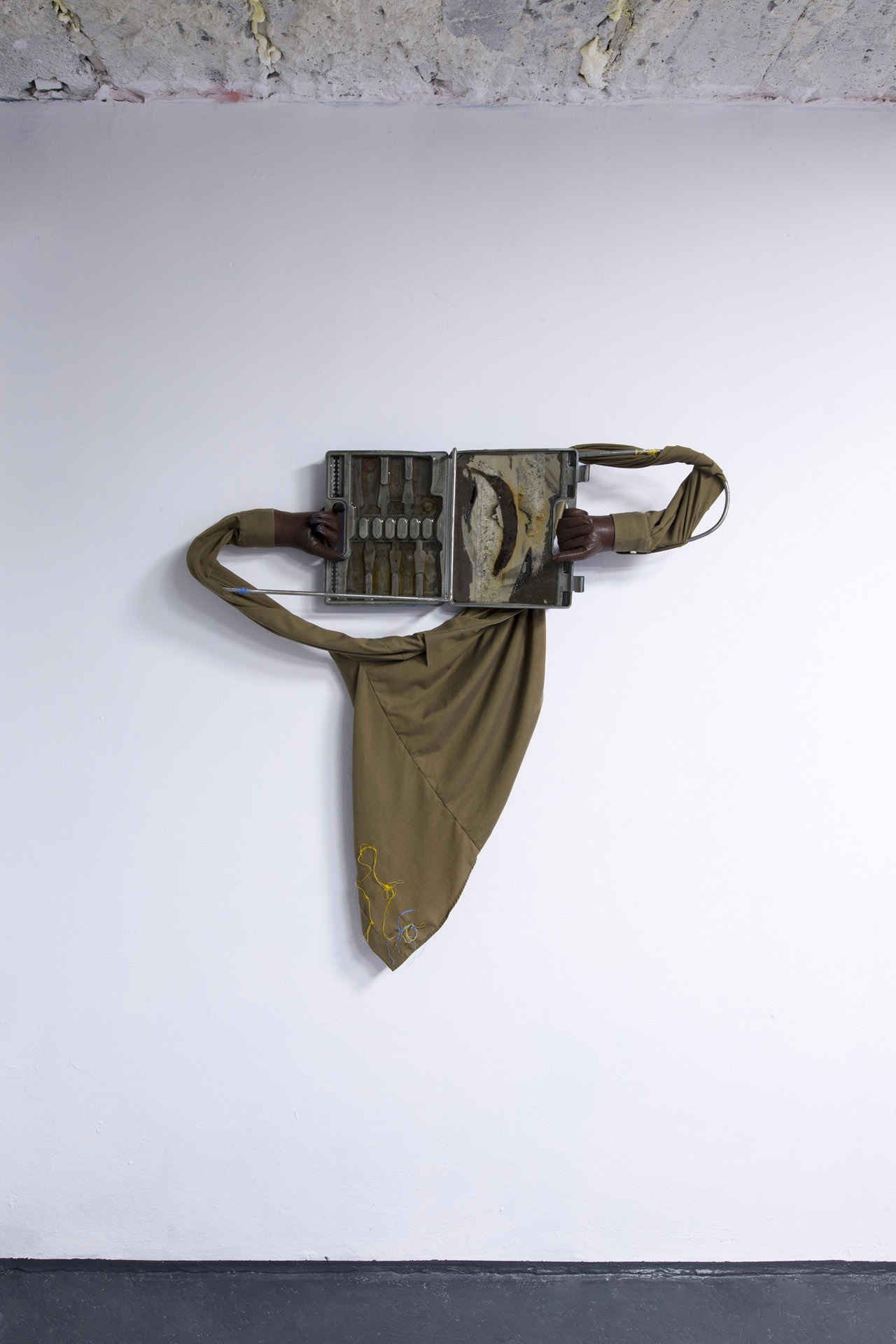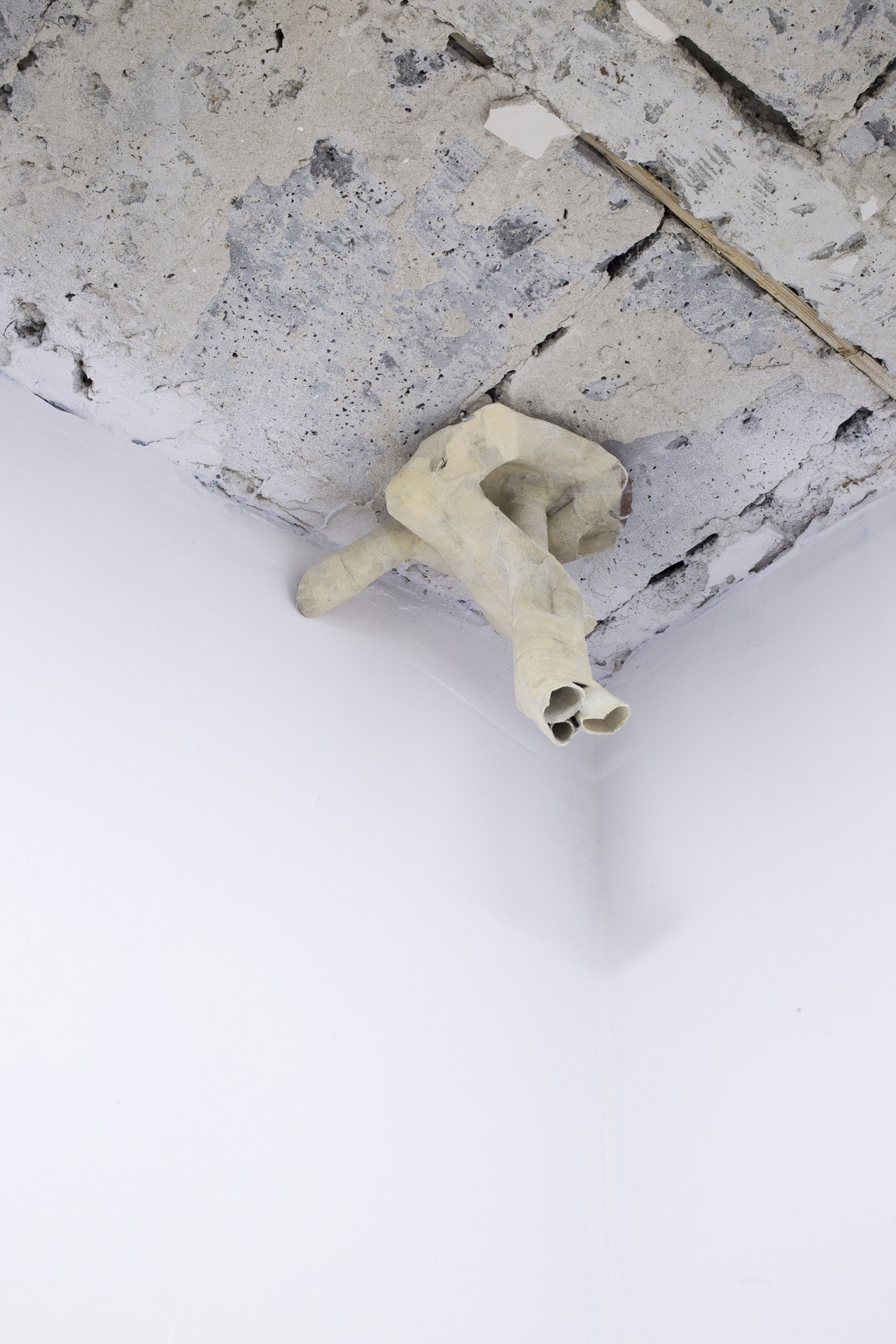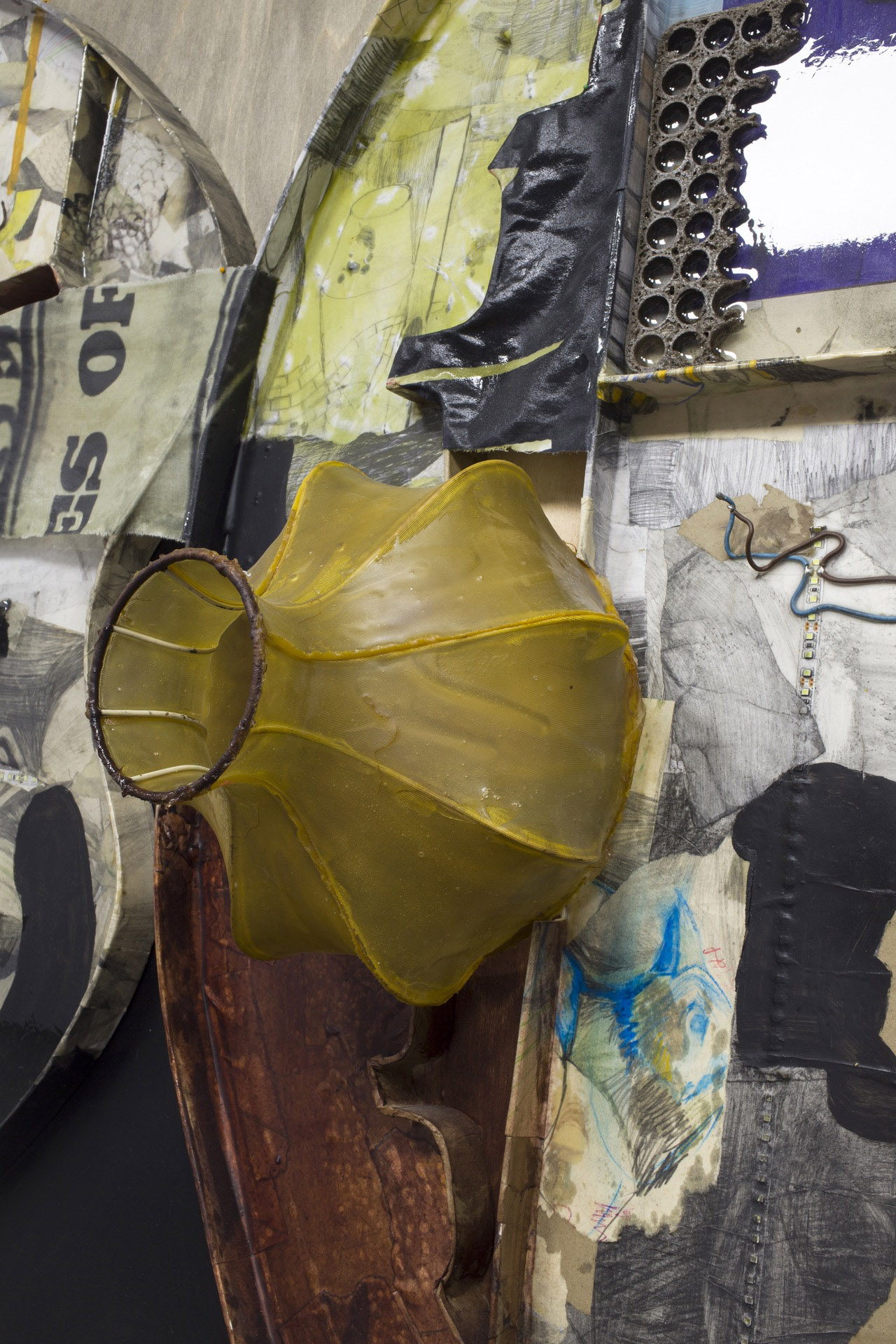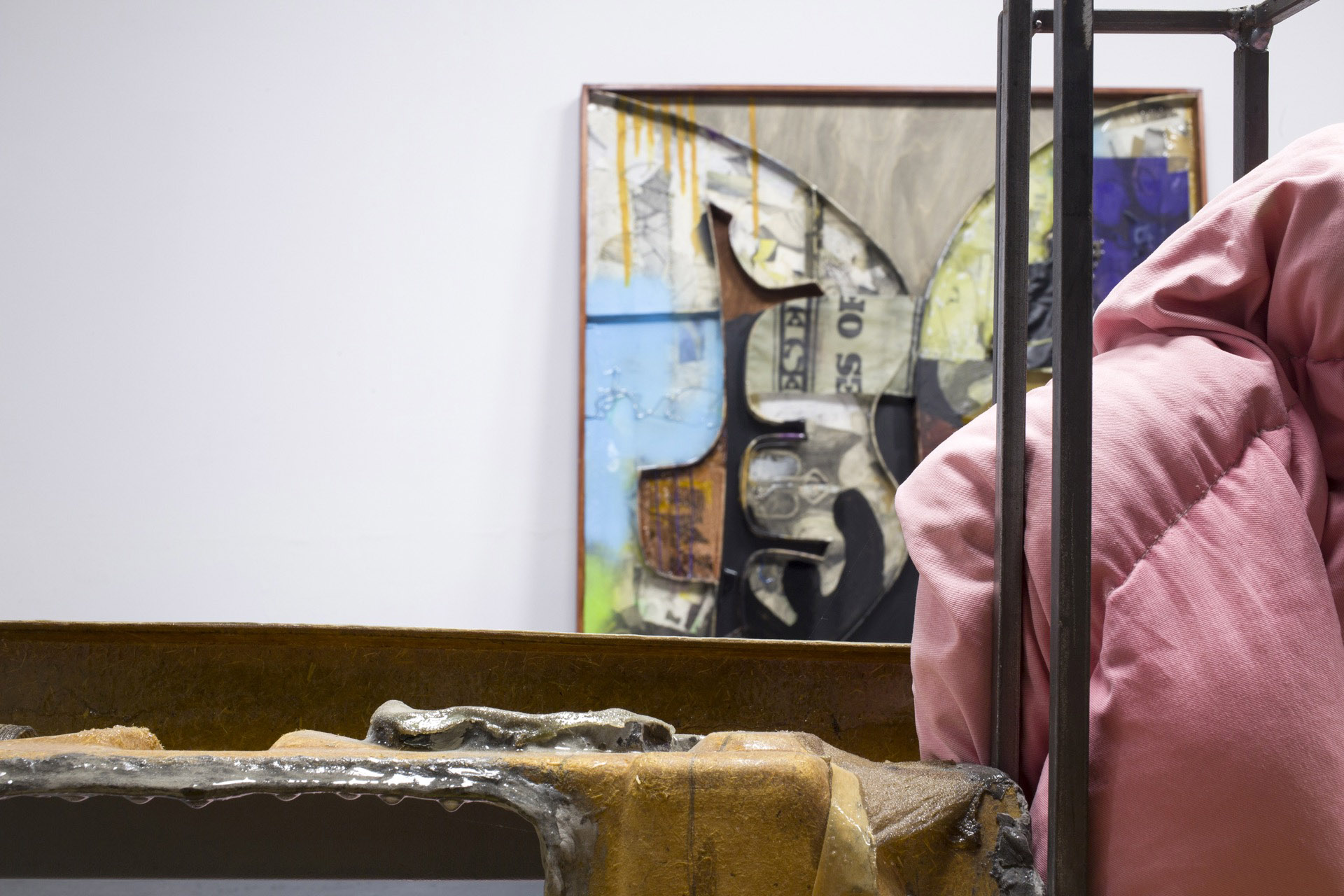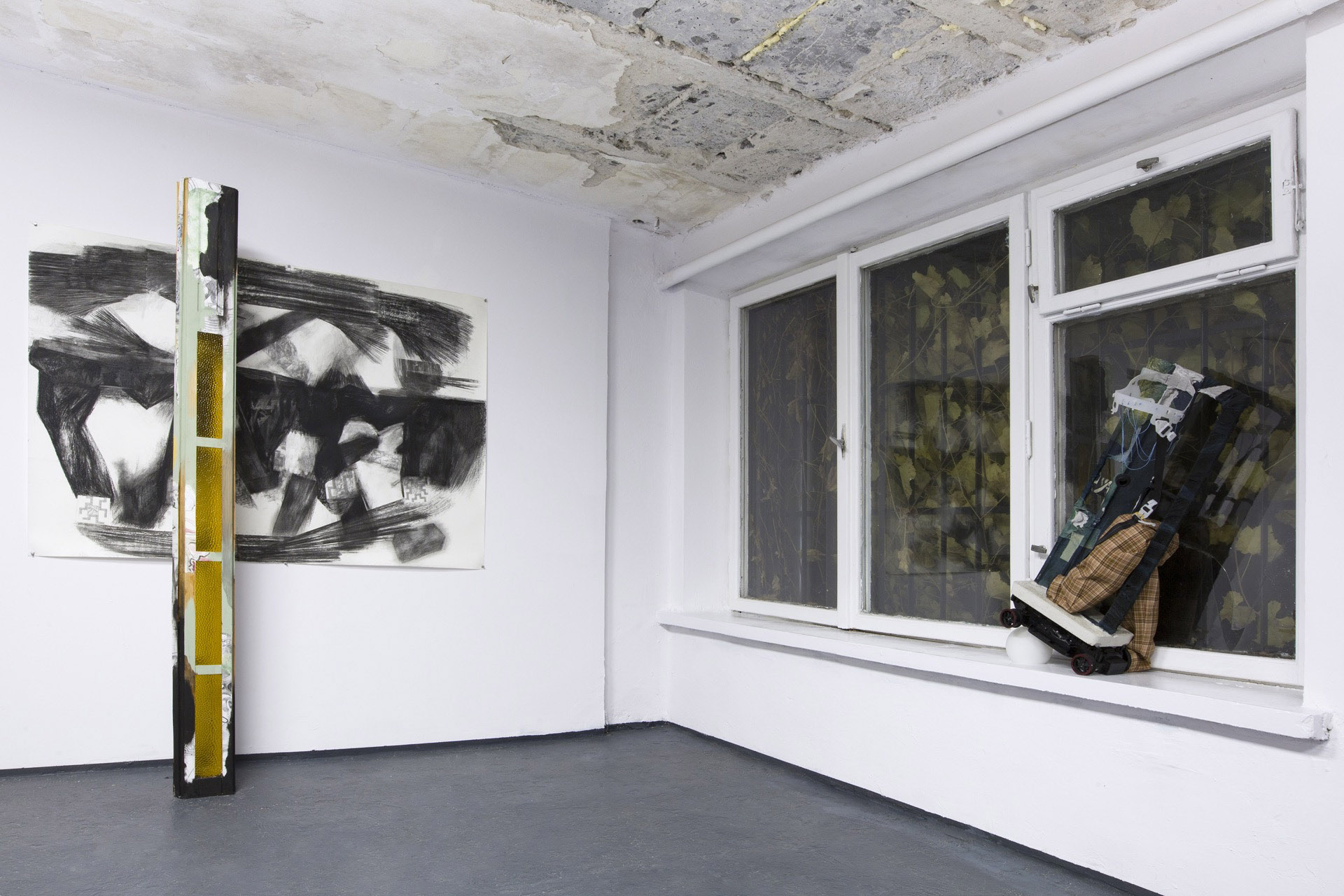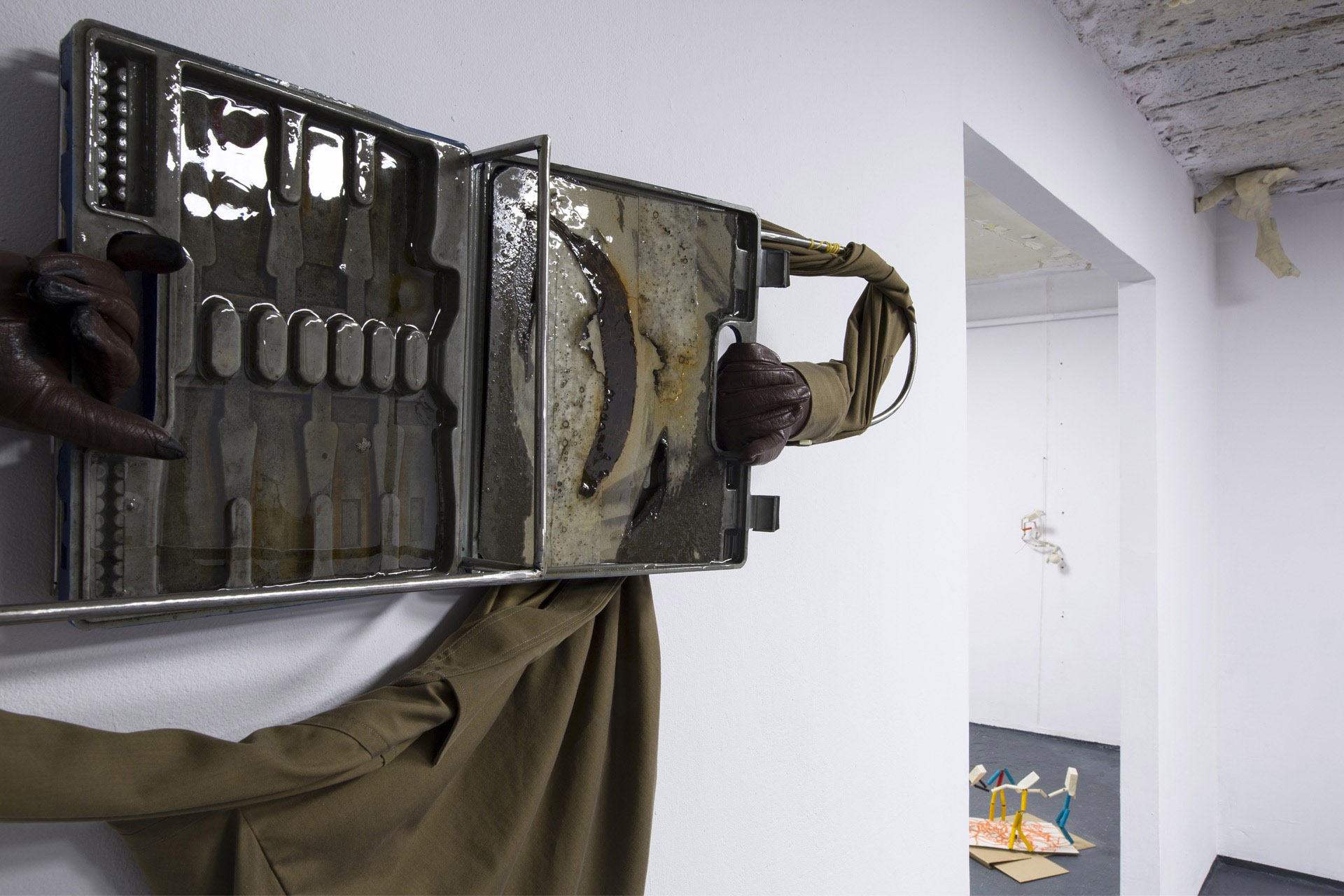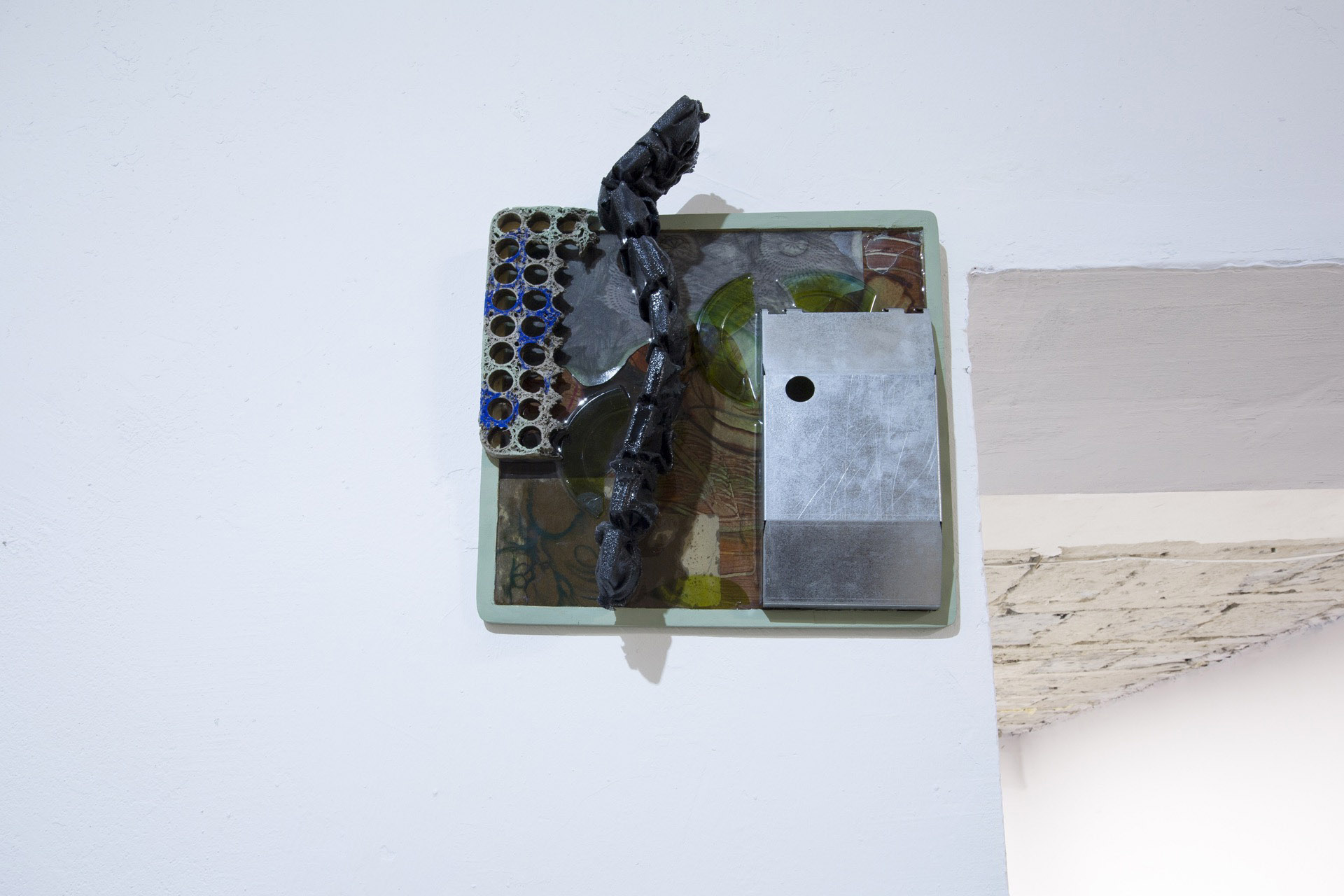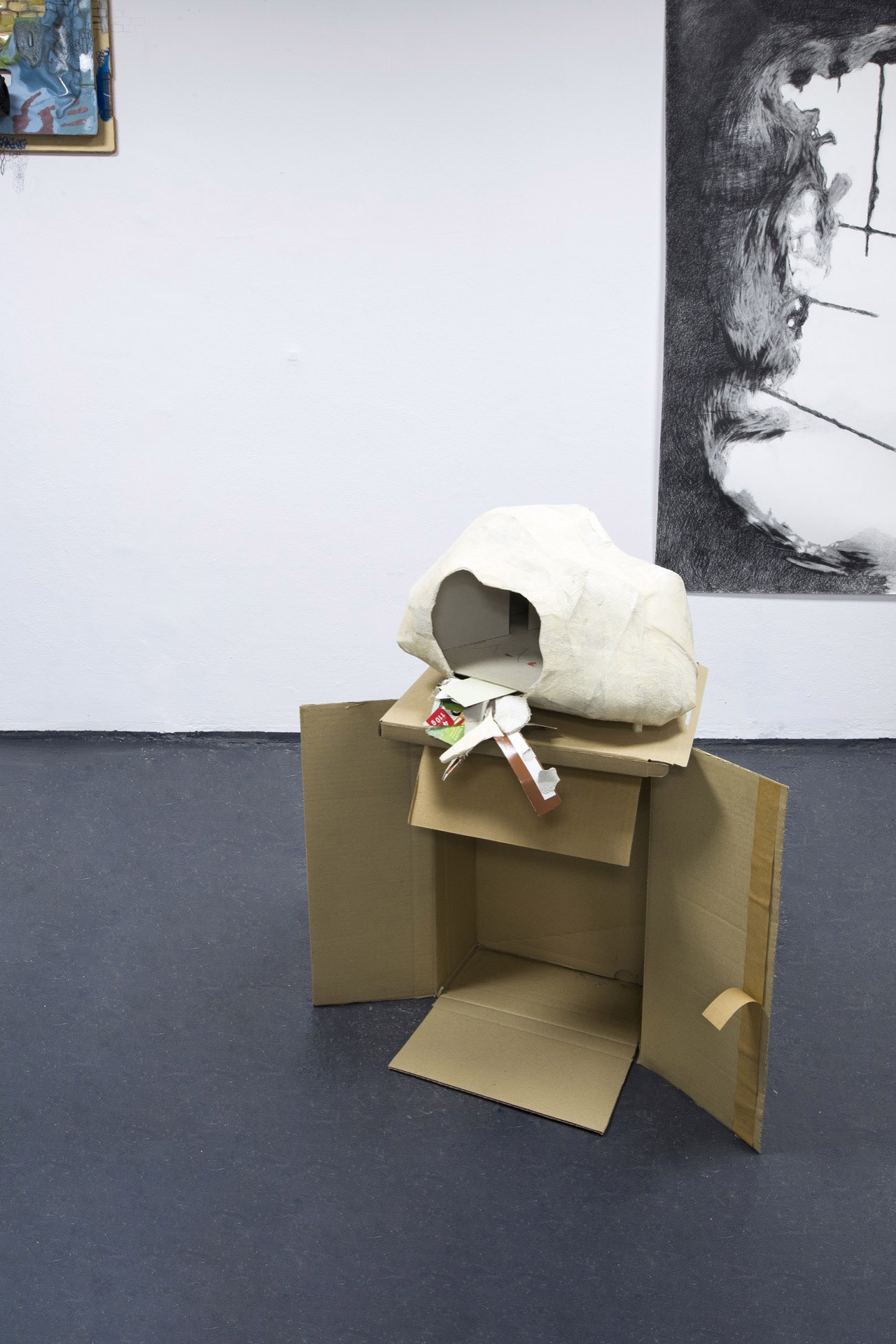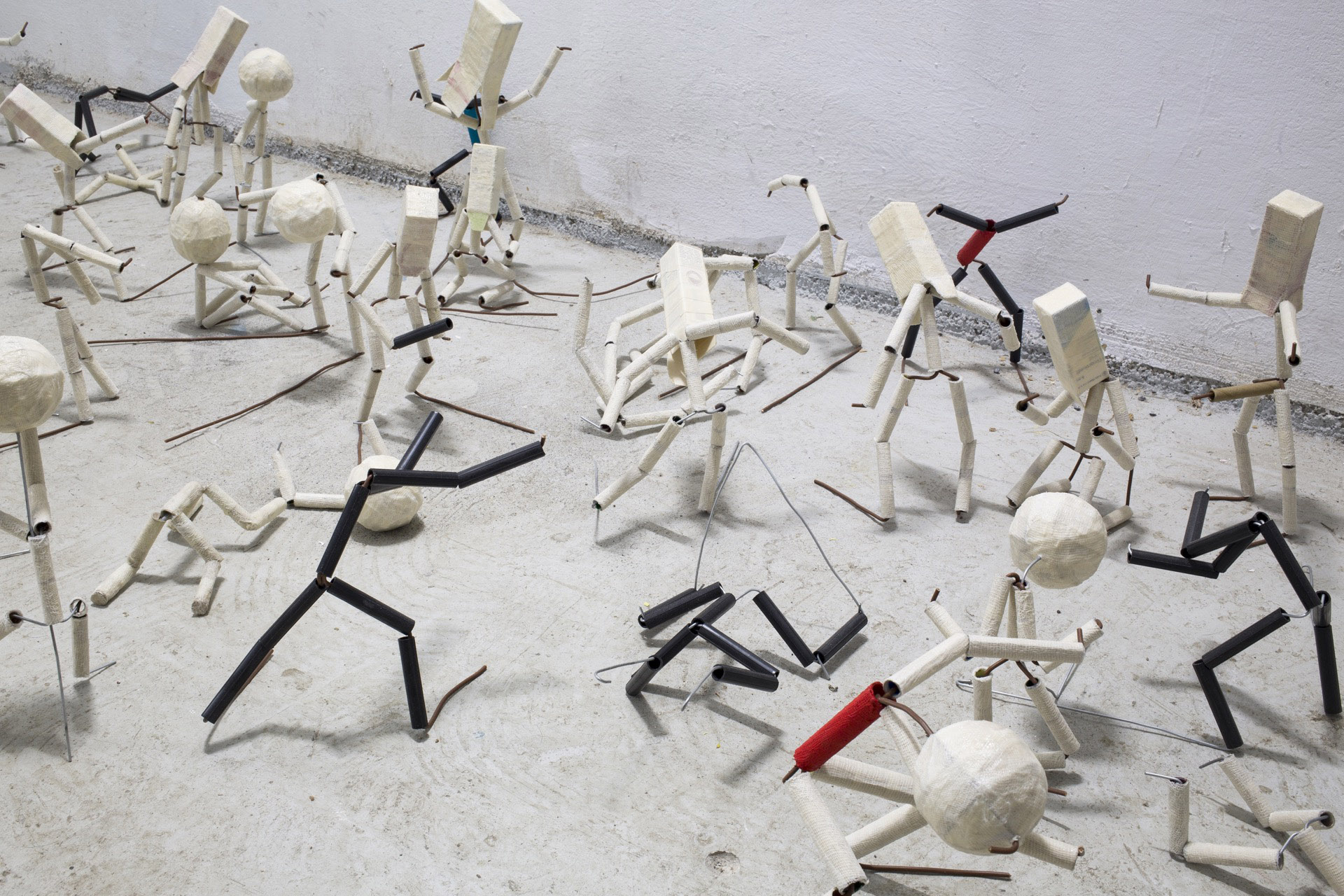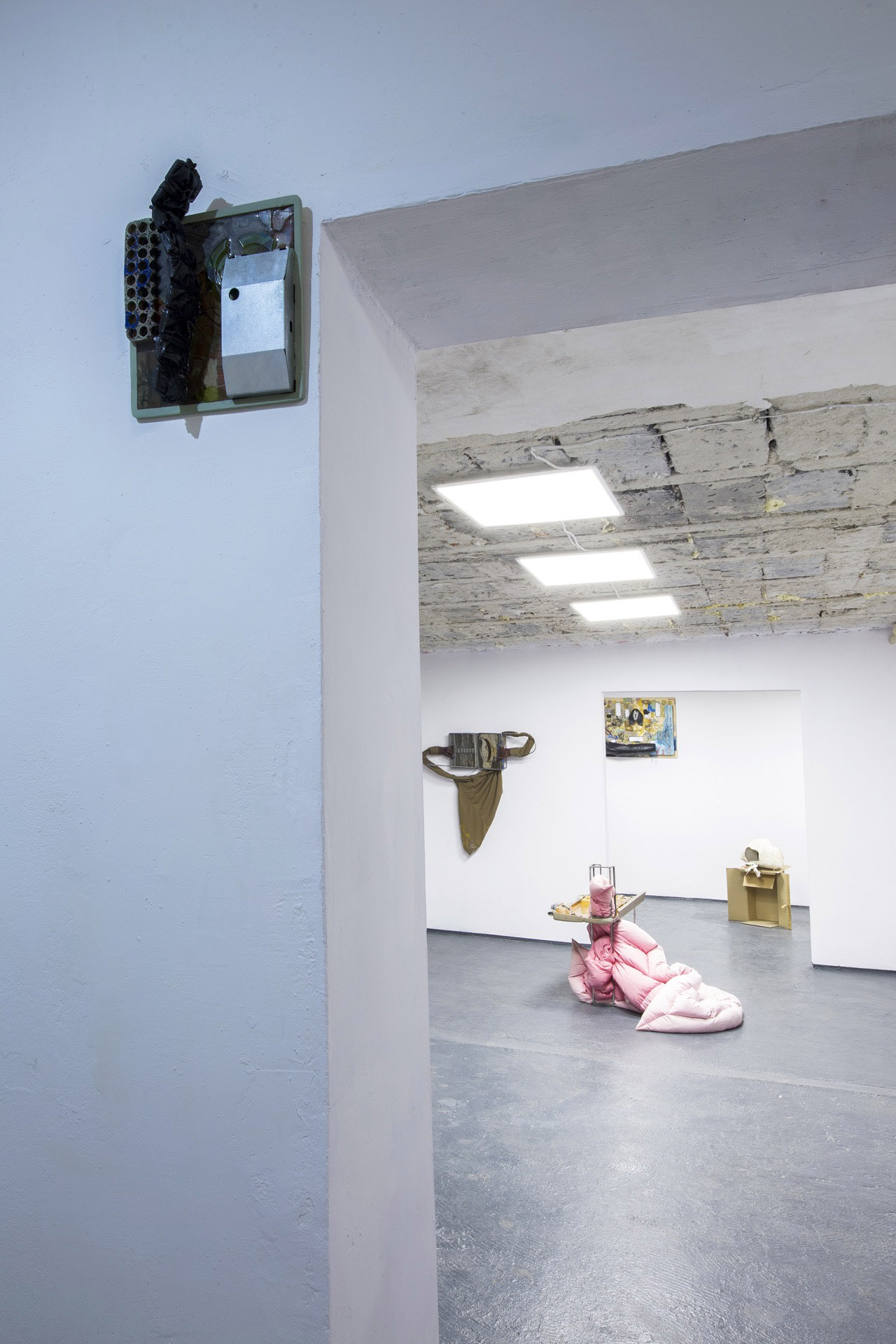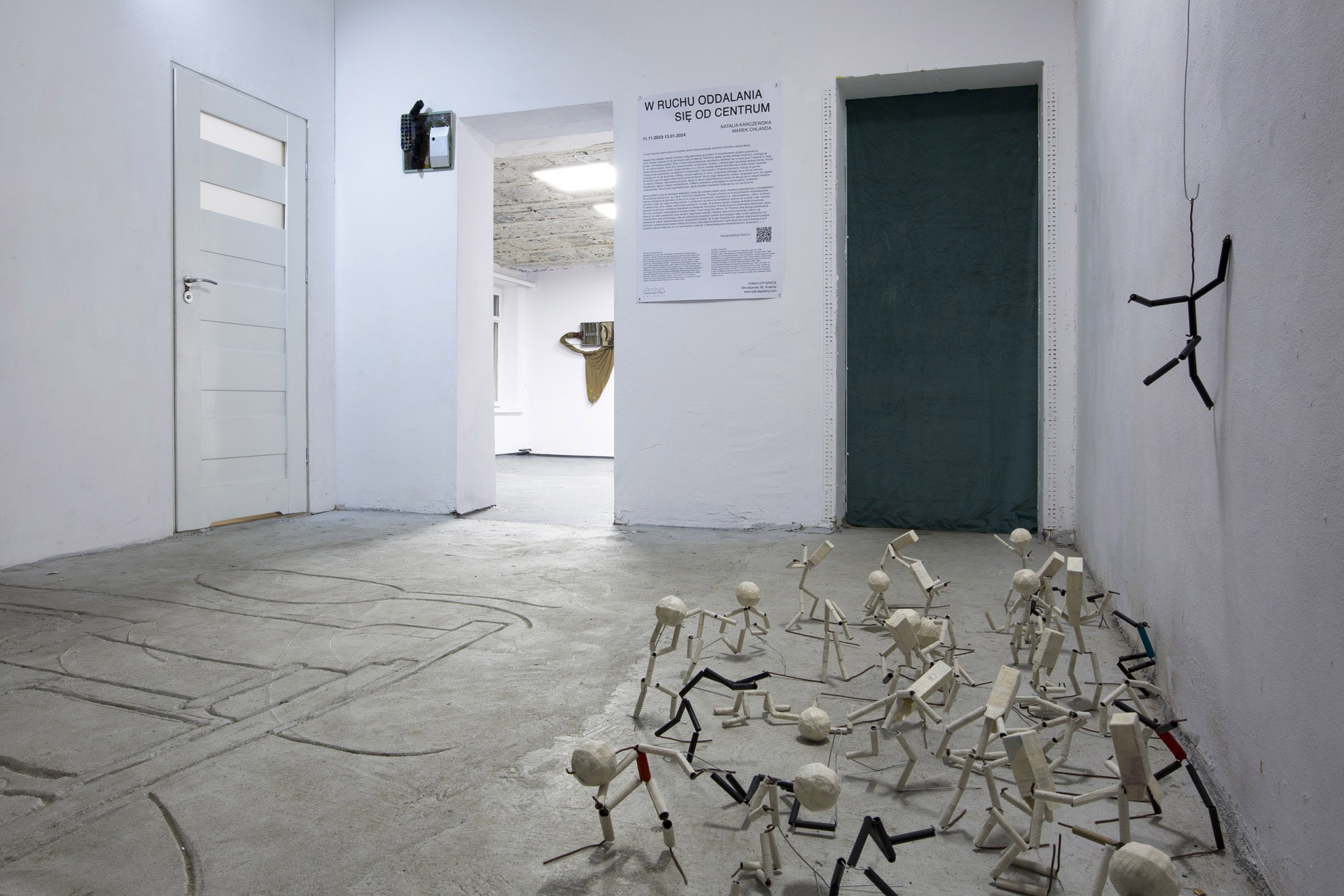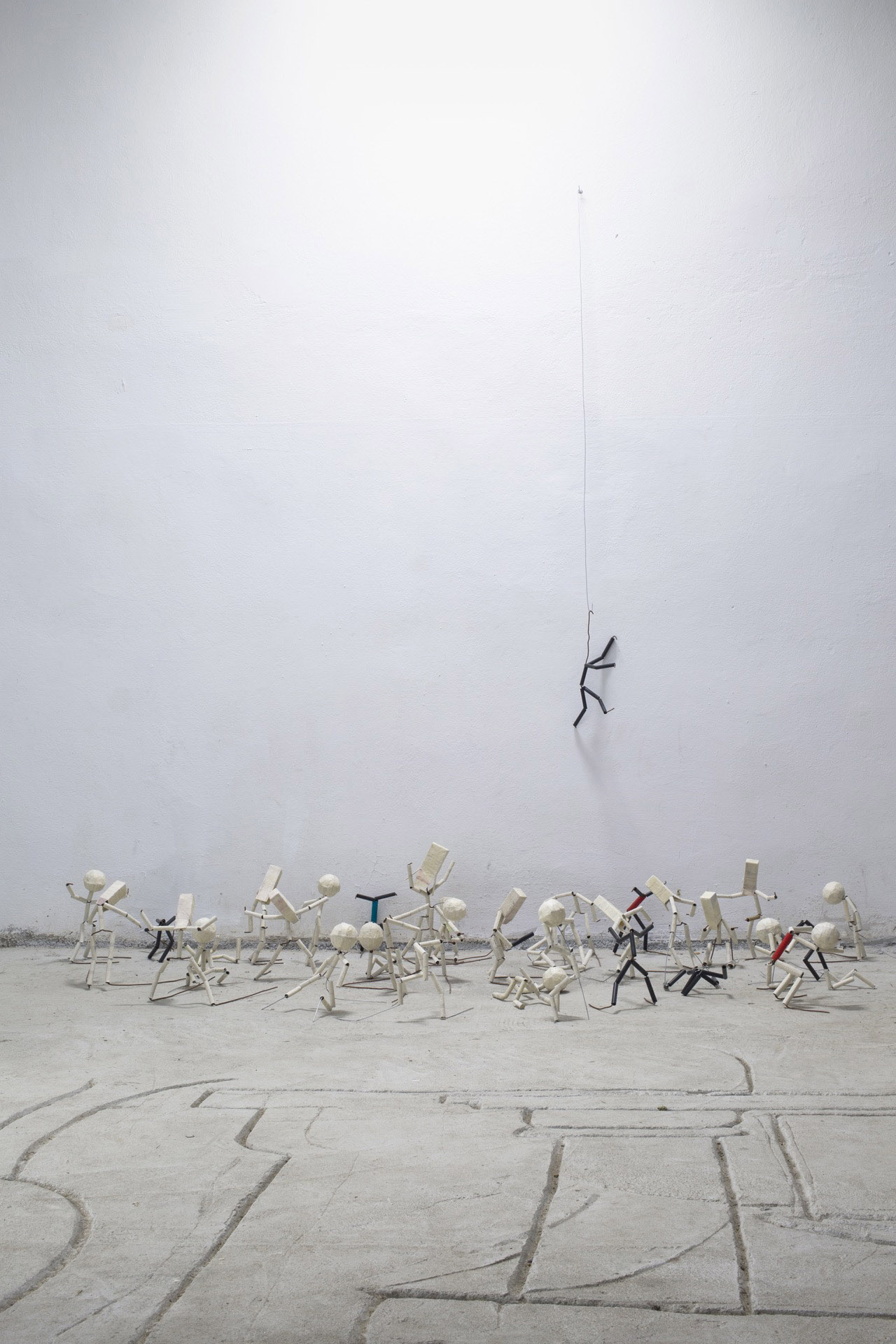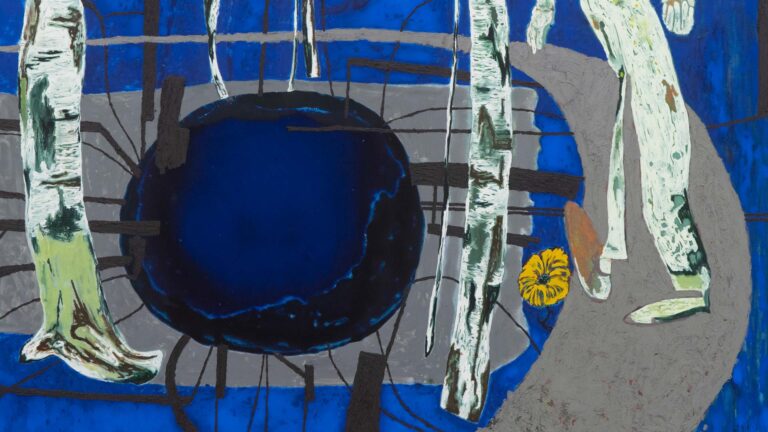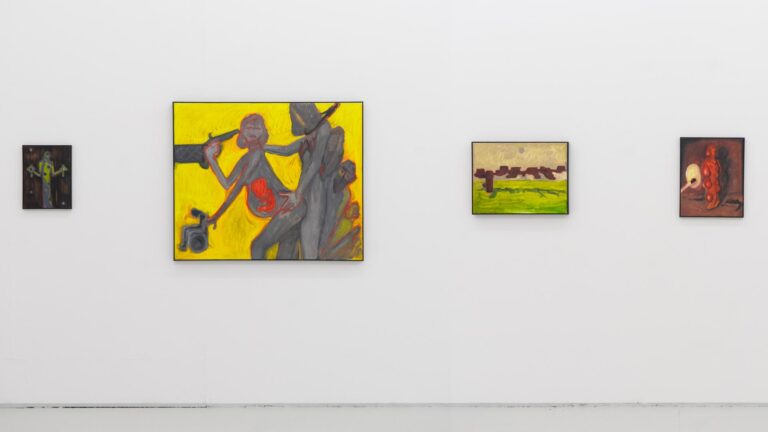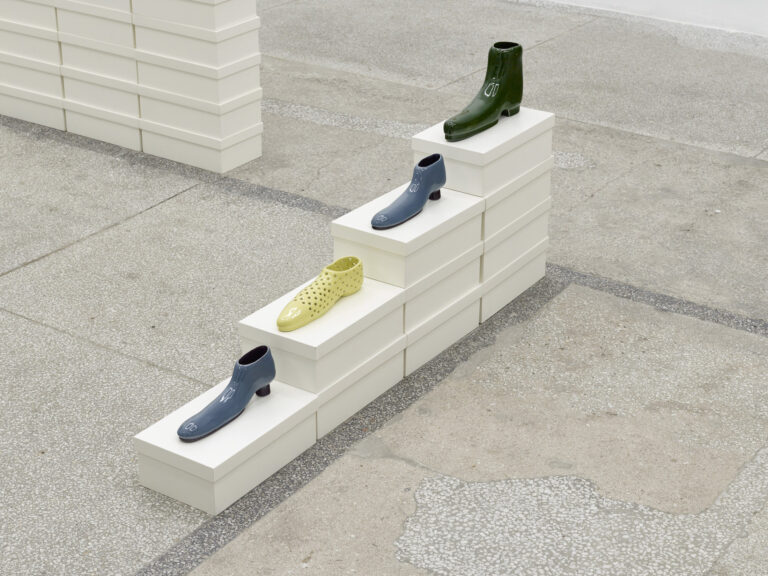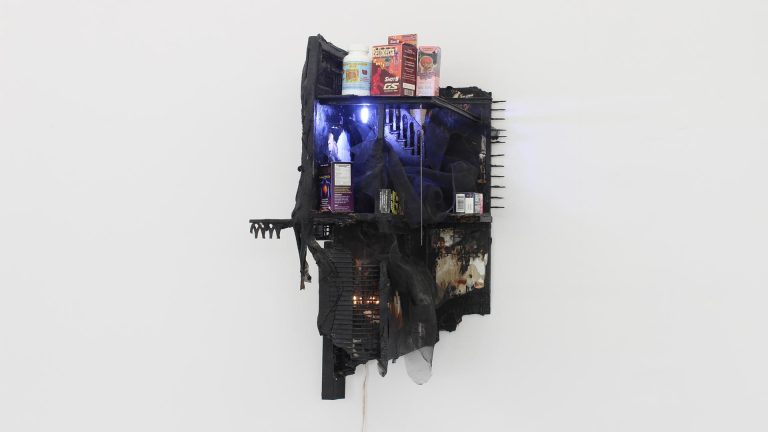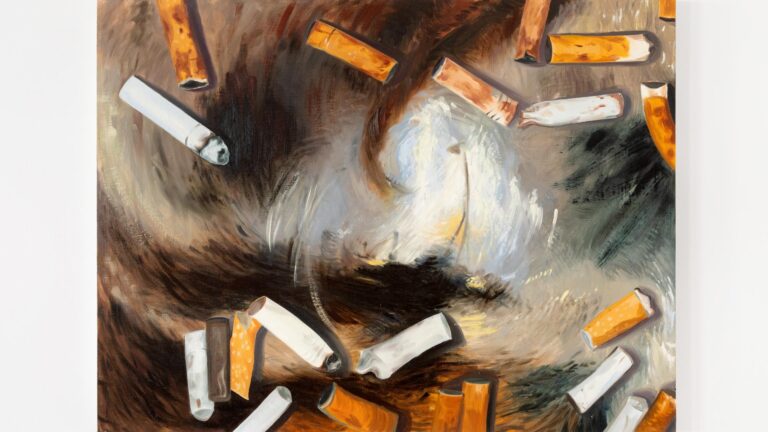Artists: Natalia Karczewska and Marek Chlanda
Exhibition title: In a move away from the center
Venue: Piana Gallery Foundation, Kraków, Poland
Date: September 16, 2023 – January 7, 2024
Photography: all images courtesy of the artists and Piana Gallery Foundation
Natalia Karczewska and Marek Chlanda are certainly pirates. The opposite of pirates are farmers. Dave Hickey, claims there are no other people in the world. Farmers divide and fence the territory they have gained, love the right angle and hate pirates. Pirates, on the other hand, like to cross fences, invade foreign land and take what is most valuable from it. Bryan Eno divided artists into farmers and cowboys, one of whom cultivates the land he has conquered, the other tirelessly seeks new land. Artist-farmers are those who are able to perfectly shoot themselves into a catchy subject and persistently build their statements on solid foundations. Karczewska and Chlanda, on the contrary, rely on the ground removing from under their feet. Therefore, they have to constantly be on the move, obviously moving away from the center in it. In the center, the game has rules established by the farmers, who know the foolproof system and play only to win. What’s more, Chlanda and Karczewska are pirates who, in their eccentric course, do not head for new worlds, undiscovered lands and new opportunities. Quite the contrary, they are attracted to barren lands, wastelands and battlefields; they feel comfortable only where all possibilities seem to have been exhausted.
Being a pirate means creating abstraction and can be either a lifestyle, an economic model, a crime or an artistic or even mystical/artistic practice. Artistic piracy is the search for and exploitation of states of ecstatic abstraction. A euphoric insight into reality, instantaneous, immediate and ephemeral, in which everything seems to be suddenly configured, and the overall dynamic constellation is revealed for one small moment. It is the loot that must be seized and seized immediately. Identity thieves, global corporations, equity investors or world powers operate in a similar way. They can spot a potential opportunity where no one else is looking and ruthlessly seize it. Pirates can be good and bad. The violence that modern empires use to steadily increase their share in seizing the added value that can be squeezed out of the Earth and its inhabitants is frightening, as is the colonization of future profits to force a steady increase in productivity, or the enslavement of entire communities by unpayable loans. At the other extreme of these phenomena are piratical spiritual practices, subversive critiques of toxic culture, alternative economies and lifestyles, and the work of ecstatic artists who manage to combine “the intangible” with intersubjectively experiential impressions.
Natalia Karczewska regularly uses used, deformed objects or their fragments in her art.It is usually difficult to recognize what the thing once was.It has been stripped of its original function, form and meaning and has become a purely plastic object and a completely new entity.For the artist, every quality counts: color, texture, consistency, shape, the way light reflects off the surface.Everything is important, perfect and treated with due attention and care.In Mark Chlanda’s work, one may have the impression that some kind of figuration is taking place, that a particular tree is recognizable, that a figure is acting out a gesture or scene or an object, such as a shoe symbolizes something.This is obviously not true, not this time.Everything here is the purest abstraction.Something that has been torn from its original place, the web of relationships, the sequence of causes and constellations of phenomena, has been cast on a ridge, thrown into a hold and carried off into the unknown across the open seas. We are in a pirate treasure cave.
In a famous anecdote, John Cage, while visiting a soundless chamber – an absolutely soundless room – heard two sounds in it, the sound of the nervous system and blood in the ears. Cage’s story is both untrue and more than true. Soundless chambers are a hot topic today, with leading centers racing to break records and measurements in decibels taking increasingly negative values. These rooms are used for testing microwave devices and are not intended for humans. People can’t stand even an hour in them, they quickly develop dizziness, nausea, imbalance, headache, panic anxiety. A situation in which no sound can be heard, except that coming from inside our bodies, is totally disorienting. Contrary to what Cage stated, the nervous system does not produce sound, similarly, the blood in the ears is rather drowned out by breathing, heartbeat, friction of joints and vertebrae, but according to what he meant, a perfectly quiet room is not silent – it is filled with music. The entire universe is constantly humming, humming its story. The undulating vibrations of gravitational radiation permeate us from the top of our heads to our fingertips, it’s a rhythmic story about the existence of everything that is and has always been, from the Big Bang to today. Thanks to physics, you don’t have to be a child to understand that buildings, trees, cars, human bodies and in general everything is filled with the sound of abstraction setting all matter in motion.
Everything vibrates in harmony with the pulse of galaxies, the deep purr of astral viscera, the throaty singing of black holes and the cosmic beat. Chlanda and Karczewska’s exhibition is a kind of universe that also produces its own subliminal soundtrack.
Natalia Karczewska’s works have a clear course, the effects occur not simultaneously, but after and next to each other, these works happen on a similar basis to the works of sonorism, they have a similarly dynamic and varied arrangement. They are so complex that it is impossible to see them all at once, one should follow them and every now and then let oneself be surprised by the procession of differentiating colors; experience the building of and discharge of tensions and evolutions of tempo; admire transitions, syntheses and destructions of textures. These works are not eyewitnesses, not instantaneous; they require passage through their duration so that they can resound in their entirety. They are reminiscent of the fullest examples of the second musical avant-garde: bravura, saturated, composed of clashes of various sounds and means of expression.
Marek Chlanda is one of those artists whose talent and memorization allow them to do anything. He could just paint hypnotic paintings dedicated to memory, the memory of annihilation, the inevitability of annihilation, or other absolutely important subjects. However, Marek Chlanda is not a farmer, he does not cultivate his art in a fertile field, rather he is drawn astray. He is a pirate, constantly setting out on expeditions, the outcome of which is always uncertain and the risks considerable. He reveals his adventurous nature most fully in works that are seemingly simple, the humblest or even the poorest: sketchy drawings that quickly grasp mystical truths; figures caught in motion whose irresistible force is signaled by a subtle shift of weight; gray cardboard reliefs in gray cardboard. In the exhibition he shows his “landscape studies,” as he calls them. Chlanda does not treat his surroundings, the landscape, like a traditional landscape artist, he is more like an archaeologist or original inhabitant, for whom a place is not an aesthetic frame, but a story of persistence and inhabitation. Experiencing a landscape becomes an act, evoking an inner image that emerges after making sensory contact with a space that resonates with events in the lives of now absent people, timeless plants, imperceptible bacteria and other forces that are difficult to recognize. Chlanda memorably depicts dynamic systems and open systems of relationships; with him, landscape is always movement.
The meeting of the two artists can hardly be reduced to a simple story. What emerged was a constellation in which the plural and polyphonic suddenly felt perfectly in relation to each other. From Karczewska’s painting objects, Chlanda’s drawings and installations emerges an existential universe of abstract insights, fleeting, subtle, unique, quietly resounding in an eccentric distribution of subtle plastic effects. Although we are dealing with traces of moments of extraordinary saturation of consciousness, micro-discoveries that by their nature seem to be only momentary, they are the result of long-term programmatic work, daily and consistent. Tuning into these systems of relationships requires considerable sensitivity and some effort. There is always a path to the pirate treasure full of challenges, false leads and riddles. One must patiently follow the clues, circulating until neurotransmitters and hormones flood the brain and allow one to feel one’s existence at the level of togetherness with everything manifesting here resonating at the same euphoric frequency.
-Jakub Bąk



